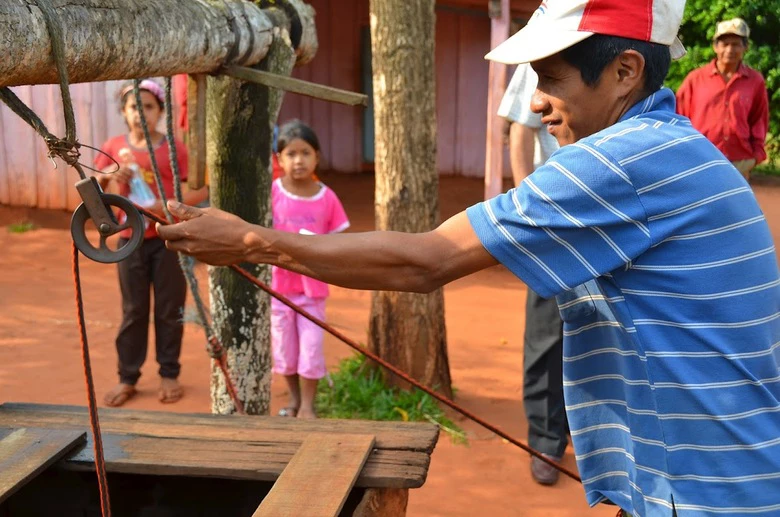 Photo: © World Bank
Photo: © World Bank
Effective policymaking relies on quality and timely development data. However, collecting poverty data remains a costly and complex process. Household surveys are the primary method for measuring household incomes and expenditures, but they can cost millions of dollars. What’s more, it often takes years before poverty estimates are released (Lanjouw and Yoshida, 2022). These delays hamper our understanding of welfare trends and our ability to formulate tailored and effective public policies.
The World Bank developed the Survey of Well-Being via Instant and Frequent Tracking (SWIFT) in 2014 to speed up and streamline poverty and inequality monitoring. It applies machine-learning techniques to the latest available household survey data to generate high-frequency poverty estimates that are comparable with official statistics. Instead of directly collecting comprehensive income or consumption data, SWIFT collects data on poverty correlates such as household size, asset ownership, education levels, or food consumption, and transforms them into poverty statistics using estimation models. Data on these correlates are collected through brief interviews that take around two to five minutes to administer.
One of SWIFT's standout features is its reliability in estimating poverty after major climate or economic shocks. While traditional machine-learning models often falter under such conditions, continuous methodological enhancements to SWIFT since its launch enabled us to produce reliable poverty estimates even after large crises in Afghanistan 2016 (see Yoshida et al. 2022).
Beyond poverty estimation
Though initially designed to generate poverty and inequality indicators, SWIFT's scope has significantly expanded. Today, it plays a crucial role in restoring comparability of official poverty statistics, facilitating real-time monitoring during crises, tracking welfare in fragile states, and pinpointing households in dire need of social assistance. With over 200 deployments across 75 countries, SWIFT spans a diverse range of socioeconomic contexts (see “Bridging the gap: Using SWIFT to rapidly monitor poverty and welfare in a time of crises”).
Our new report, "Enabling High-frequency and Real-time Poverty Monitoring in the Developing World" delves into how SWIFT leverages machine learning and statistical methods to generate real-time, reliable, and comprehensive insights into poverty dynamics in various use cases.
Monitoring poverty post-climate shocks
In Southern Malawi, SWIFT has been integrated with the Rapid and Frequent Monitoring System, a community-based data collection system, to continuously produce poverty estimates in rural areas in the south of the country since 2020. When two cyclones hit the area in February 2022 and March 2023, SWIFT helped show that though the storms' impacts were not immediate, they damaged crops, which in turn affected household incomes in the following harvest season. Consequently, this delayed impact manifested as a gradual increase in poverty during the harvest period.
Leveraging existing data to monitor poverty quarterly
Another innovative aspect of SWIFT is its easy integration with existing data collection processes, such as Quarterly Labor Force Surveys, to monitor poverty. This reduces costs to a fraction of traditional methods. Trials in countries like Botswana, the Democratic Republic of Congo, and Paraguay confirmed the potential for frequent monitoring of poverty with substantial savings.
In Paraguay, the National Institute of Statistics and the World Bank piloted the use of SWIFT to produce poverty estimates quarterly. Results from this collaboration show that the quarterly estimates capture large fluctuations of poverty during the COVID-19 pandemic.
Restoring data comparability
New household surveys may have improvements in technology and methodology that can enhance the quality of poverty data, but this often comes at the cost of reduced comparability over time. SWIFT addresses this challenge by adjusting household expenditure figures from earlier surveys to match more recent ones, ensuring a consistent series of poverty data. This feature has been applied in countries such as Mongolia and Nigeria showcasing SWIFT's capability to maintain data integrity over time.
What does this imply for poverty monitoring moving forward?
SWIFT's flexibility is evident in its application across various challenging environments, from refugee monitoring in Uganda to economic crisis assessments in Zimbabwe. The evolution of the approach from a poverty measurement tool to a comprehensive poverty monitoring system reflects its adaptability, resilience, and potential.
As the SWIFT methodology evolves, it can become an increasingly valuable framework to empower even low-income countries to track poverty more regularly. More frequent and timely poverty data enable governments and development partners to understand the immediate, medium-term, and long-term impacts of climate change, economic recessions, conflicts, and natural disasters on poverty and overall living conditions.




Join the Conversation